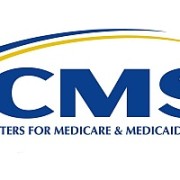Meaningful Use Stage 2 – Why You Shouldn’t Wait to Get Started
The big story of Meaningful Use Stage 2 (MU2) as compared to Meaningful Use Stage 1 (MU1) is one of a movement from patient engagement to patient action. Underestimating the time necessary to get your organization ready to attest for MU2 can be a costly mistake. MU2 may only seem like a few additional core measures and a few less menu objectives; however, many of the MU1 measures have increased thresholds and many of the MU2 measures require patient action. These new thresholds and patient actions items are not difficult to achieve, but they are dependent on a factor of time.
Meaningful Use Stage 2 Qualification and Important Dates
Providers that have met at least two years of MU Stage 1 by 2013 can begin attesting to Stage 2 in 2014. MU1 required that Eligible Providers (EPs) complete 15 core measures and 5 menu objectives. Hospitals and CAHs were required to meet 14 core measures and 5 menu objectives. MU2 requires EPs complete 17 core measures and 3 menu objectives or 20 core measures. Hospitals and CAHs must complete 16 core measures and 3 menu objectives or a total of 19 core measures. Allowing for vendors and providers to get systems in place, MU2 attestation only needs to be for a period of 90 days in 2014. If eligible, you may start Meaningful Use Stage 2 on January 01, 2014; however, you must begin by October 2014 if you have already met your MU1 requirements.
MU2 Increases Measure Thresholds
Clinical Summaries under MU1 were to be provided within 3 days of the encounter, where as in MU2 they must be provided within 24 hrs for more than 50% of all office visits and must include a care plan that identifies goals and instructions to the patient. The addition of the care plan is but one of several changes to this measure. This measure can take some time to achieve as the system may need configuration and the providers and office staff will need training on new workflows in order to meet the reduced time requirement.
MU1 required that patients be sent reminders for preventative or follow up care to more than 20% of patients greater than 65 years of age and below 5 years of age. The new measure for MU2 will require reminders be sent to more than 10% of all unique patients who have had an office visit in the past 24 months prior to the beginning of the EHR reporting period, per patient preference. This may seem like a reduction in the number of patient reminders. However, depending on your patient demographics that number is likely to significantly increase. Therefore, you can expect this measure to take longer to meet even after you have your system configuration and workflow in place.
MU2 Moves from Patient Engagement to Patient Action
Previously, greater than 50% of all patients who requested an electronic copy of their health information were provided the electronic record within 3 business days. More than 10% of all unique patients were provided with timely electronic access within 4 business days of the information being available to the EP. MU2 takes this core measure and menu objective and combines them into one core measure. This will require that more than 50% of all unique patients are provided timely access (4 business days) to their health information and more than 5% of all unique patients (or their authorized representative) view, download or transmit their health information to a third party.
There are a few interesting items that go along with this measure. The relocation of electronic health information via flash drive or CD does not count, and the only exclusion comes if you do not create health information or your county has fewer than 50% of households with a broadband connection of 4Mbps. It is also important to remember that this information has been bolstered by the addition of the care plan. This measure is an example where we really see the emphasis on patient action. Depending on your patient demographic, utilization of electronic health information at this level can take several months or even several quarters.
Another example of the emphasis of patient action is seen in the core measure surrounding secure messaging. MU2 requires that the organization use secure messaging to communicate with patients on relevant health information. To meet this measure you must receive a secure message from greater than 10% of patients using the electronic messaging function of a Certified EHR Technology. This may not seem like a difficult measure to meet; however, you are relying on the patient action to meet the requirements. This is a factor of the number of patient encounters and time allowed for the patient to learn and utilize the electronic system.
These examples may make MU2 seem like a daunting task, but there is some good news. You have a variety of way to achieve these goals, such as hosting a patient portal, contracting a vendor-hosted portal, or connecting with an online PHR. Electronic usage in the United States is increasing by leaps and bounds, especially among the 65 and over age group. While MU2 measures may seem largely out of your control in regards to patient action, you can easily meet the requirements through proper planning and the help of knowledgeable resources.
Organizational Adoption Tips
There are several simple ways you can expedite the adoption and achievement of MU2 at your organization. Training providers to remind patients about the portal and resources available to them at each encounter will greatly increase the percentage of patients utilizing the system. Further patient communication about the patient benefits of the portal is an easy way to make this process easier. Marketing materials in mailing and emails as well as promotion via your telephone messaging system can help get the word out. And results sent via the portal encourage the patient to access their health information and increase the odds that they will use this information.
To promote adoption from within the organization, you can appoint or elect an MU2 guru or champion who can lead the clinical staff in utilizing the patient portal. Creating incentives and competition helps to get the providers and office staff involved in a fun a productive manner. Setting goals that are manageable and well projected can help you comfortably meet the requirements or your attesting period. Competing to receive patient communication or striving to reach a goal of patient registrations allows the staff to compete among one another while working towards a common team goal. You can also utilize the reception areas and waiting rooms to put up flyer and posters instructing patients and providers about the portal benefits and programs.
No matter what your organization decides to do, it is important to remember that you need to plan on additional time once you have your system and training in place. With proper planning you can easily achieve your organizations goals and do so in a painless manner. With the extra time needed and the available incentives, there is no reason you should wait to get started on achieving Meaningful Use 2.
Benjamin Maultsby, IMBA
Implementation Consultant, MBA HealthGroup
Do you have questions on Meaningful Use Stage 2?
[button color=”Extra-Color-2″ size=”medium” url=”https://www.mbahealthgroup.com/contact-us/” text=”Talk with a consultant for free…”]


